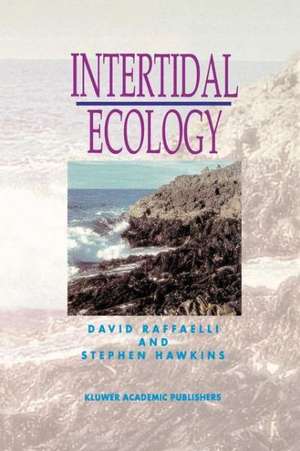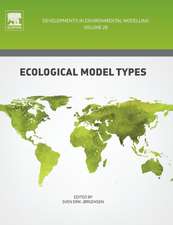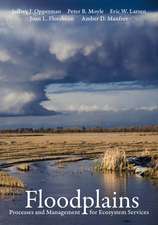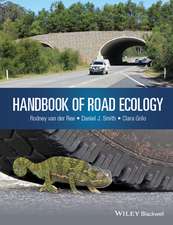Intertidal Ecology
Autor D. Raffaelli, S. J. Hawkinsen Limba Engleză Paperback – 30 sep 1996
Preț: 915.56 lei
Preț vechi: 1116.53 lei
-18% Nou
Puncte Express: 1373
Preț estimativ în valută:
175.19€ • 183.29$ • 145.53£
175.19€ • 183.29$ • 145.53£
Carte tipărită la comandă
Livrare economică 02-16 aprilie
Preluare comenzi: 021 569.72.76
Specificații
ISBN-13: 9780412299605
ISBN-10: 0412299607
Pagini: 356
Ilustrații: XI, 356 p.
Dimensiuni: 155 x 235 x 21 mm
Greutate: 1.15 kg
Ediția:1999
Editura: SPRINGER NETHERLANDS
Colecția Springer
Locul publicării:Dordrecht, Netherlands
ISBN-10: 0412299607
Pagini: 356
Ilustrații: XI, 356 p.
Dimensiuni: 155 x 235 x 21 mm
Greutate: 1.15 kg
Ediția:1999
Editura: SPRINGER NETHERLANDS
Colecția Springer
Locul publicării:Dordrecht, Netherlands
Public țintă
ResearchCuprins
1 The shore environment: major gradients.- 1.1 Four major environmental gradients.- 1.2 Interactions between gradients.- 1.3 Modifying factors.- 1.4 Comparisons with other ecosystems.- Overview.- 2 Patterns of distribution.- 2.1 Universal zonation schemes for rocky shores.- 2.2 Rocky shore zonation in different parts of the world.- 2.3 Distribution patterns on other shore types.- 2.4 The meiofauna.- 2.5 Macrophytes on sheltered shores.- 2.6 Zonation along the estuarine gradient.- Overview.- 3 Causes of zonation.- 3.1 Vertical zonation on rocky shores.- 3.2 Determinants of zonation on other kinds of shores.- 3.3 Causes of zonation along other shore gradients.- Overview.- 4 Community dynamics.- 4.1 Rocky shores.- 4.2 Sediment shores.- 4.3 Community succession.- Overview.- 5 Coping with the physical and biological environment.- 5.1 Finding a place to live.- 5.2 Coping with the vertical and horizontal gradients on rocky shores.- 5.3 Coping with life on sandy shores.- 5.4 Coping by modifying behaviour.- 5.5 Dealing with other organisms.- 5.6 Associations, mutualisms and symbioses.- Overview.- 6 The shore as a system.- 6.1 The oceanographic context.- 6.2 The flow of material and energy in shore systems.- 6.3 Links between the shore and other systems.- 6.4 Energy flow and functional interactions on shores.- Overview.- 7 Human impact on the shore.- 7.1 Collecting marine plants and animals for food, bait and curios.- 7.2 Chronic pollution.- 7.3 Acute effects on shores.- 7.4 Introduction of new species.- 7.5 Coastal zone change.- Overview.- 8 Studying shores.- 8.1 Describing the shore.- 8.2 General methods for use on both rocky and sandy shores.- 8.3 Methods applicable to rocky shores.- 8.4 Methods applicable to sediment shores.- 8.5 Long-term studies.- 8.6 Field experiments.- Overview.- References.- Species index.
Recenzii
...an admirable approach and style... - Biologist; ...the book is a tremendously good read. - Estuaries.











